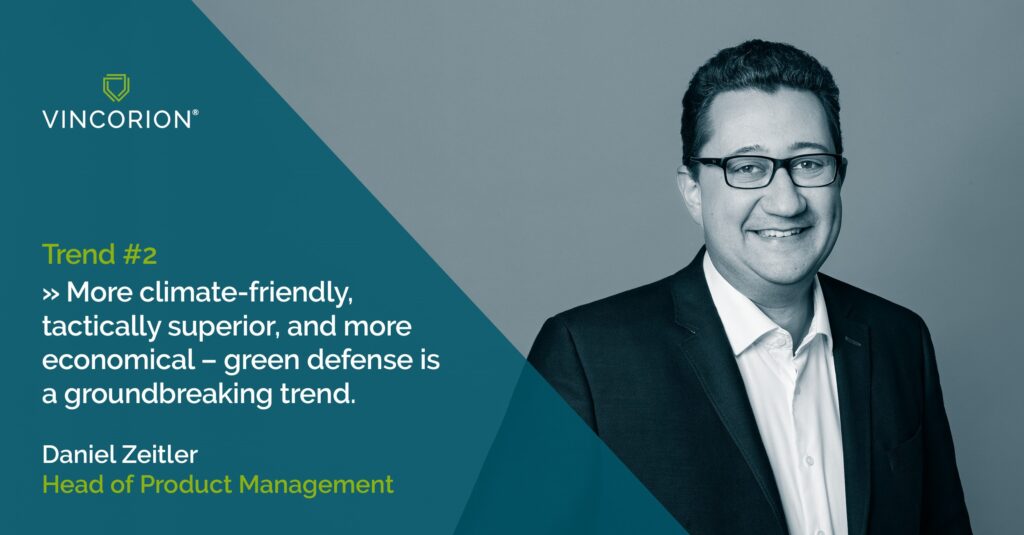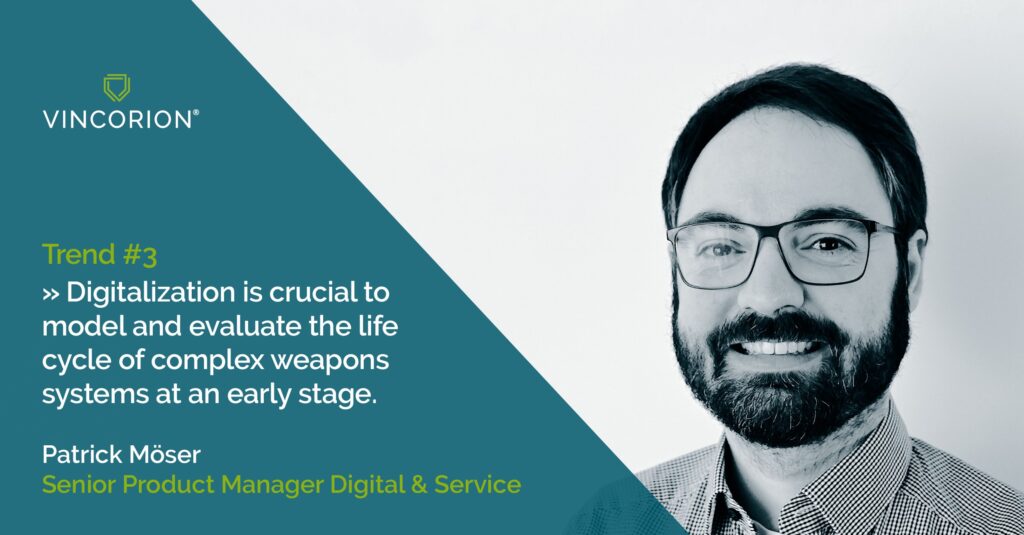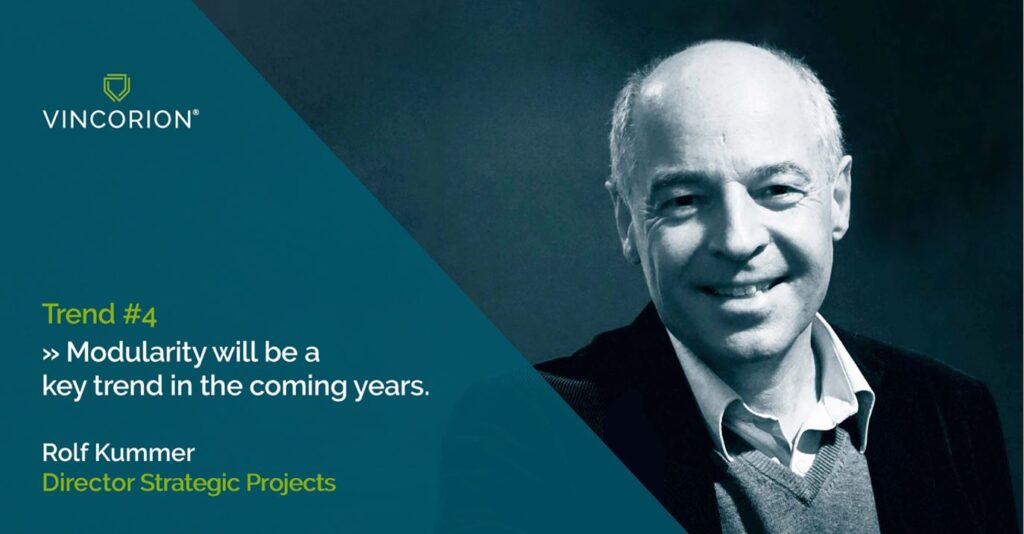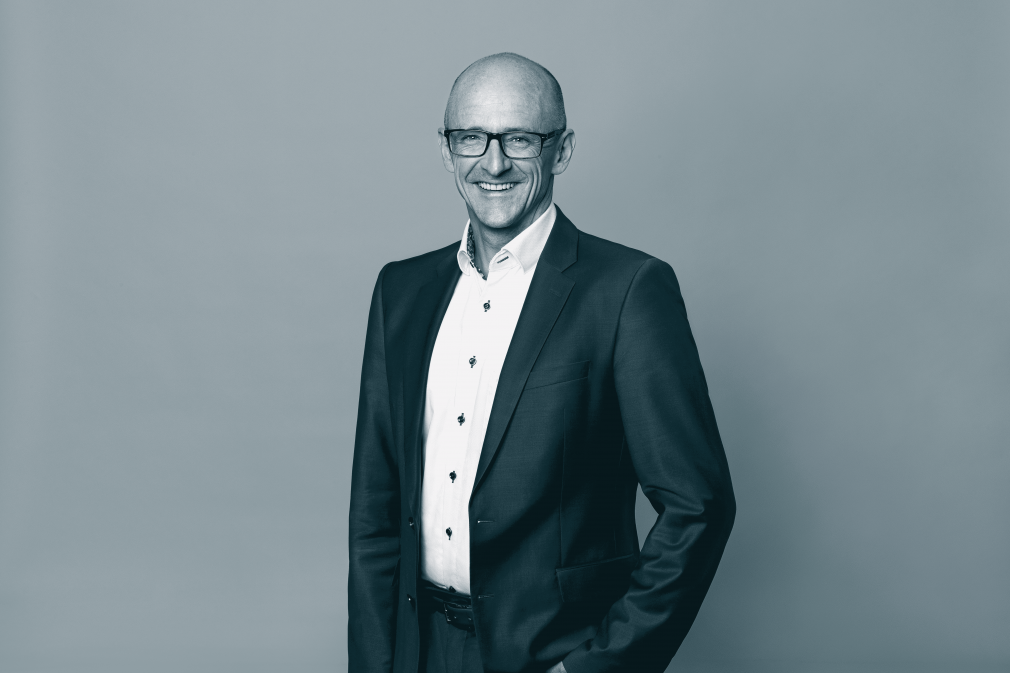What awaits the defense industry in 2024 and beyond? Which technological trends and developments should you keep a close eye on? We asked our experts at VINCORION.

Henning Radtke, Head of Governmental Affairs at VINCORION:
“The interoperability of systems and platforms for military operations is of essential importance and, in my view, will be a hot topic in the coming years. We are observing a rapidly progressing consolidation and harmonization across NATO’s armed forces. This has several advantages: armed forces from different countries are familiar with their partners’ systems and can use them and, if necessary, share maintenance and repair capacities. This creates economies of scale in joint procurement and deployment as well as greater and more reliable capacity utilization in the industry.”

Daniel Zeitler, Head of Product Management at VINCORION:
“NATO plans to be climate neutral by 2050 and the EU and national armies also have clearly defined net-zero carbon emissions targets for the next 20 years. But we know, that military systems have life cycles of more than 20 years, so armed forces need a future-proof energysupply already today. To achieve this, we must exploit all the technological possibilities offered by hybridization and electrification and, in addition to reducing emissions, integrate the resulting tactical, user-friendliness, and cost-efficiency benefits.
Our PGM low emissionsV gensets are a perfect example of this – thanks to their hybrid technology, fewer refueling operations are required, for example, which has direct tactical advantages in terms of personnel requirements, logistics, and costs. More climate-friendly, tactically superior, and more economical – in my view, green defense is a groundbreaking trend.”

Patrick Möser, Product Manager Digital & Service at VINCORION:
“Since 2022, we have seen a strong increase in demand for an effective spare parts supply and more efficient MRO processes in the military sector. In order to meet these needs, we are focusing on creating new, innovative services. Thereby we are using the power of digitalization for upcoming challenges, to already virtually model and evaluate the usage of complex weapons systems at an early stage. With this, we support our customers in closing capability gaps and opening up new potential. Market-driven availability, operational readiness, and lean life-cycle costs are at the heart of this approach. Our end customers, e.g., for our new hybrid gensets, value this approach.”

Rolf Kummer, Director Strategic Projects at VINCORION:
“With military operations becoming increasingly complex and unpredictable, modularity in military vehicles is becoming more and more relevant, which is why I believe it will be a key trend in the coming years. A modular design increases the operational readiness of land systems by ensuring that individual modules are always available for replacement, e.g. through spares pooling, thereby significantly reducing delivery times. This not only decreases the downtime of weapon systems, but also saves costs. This is why the aerospace industry has successfully been using modular design and logistics concepts such as these for some time.”
The defense industry should keep a close eye on these technological developments
Product managers and developers are always on the lookout for fresh ideas or busy working on improvements to their solutions – an “occupational disease” in the best sense. But a viable innovation also needs to be profitable. In other words, they are hunting for diamonds. Today we’ll be taking you on a treasure hunt with us for Insights
On Shark Tank, the internationally successful television format, people bravely stand in front of a jury, pitch the project they’ve put their heart and soul into, and hope for support and the opportunity to continue their dream. Who doesn’t love to root for the inventors and entrepreneurs who present their ideas and products and compete against each other in front of big-name investors? Because in the end, that’s exactly what it is – a competition for the best ideas and the associated injection of capital and expertise that founders are so eagerly hoping for. Although not quite as successful, this competition now also exists the other way around. On “Fuckup Nights,” participants take the stage to talk about their failures, about how they dusted themselves off and are trying again, about mistakes, and about lessons learned.
Don’t Follow Every Impulse
These completely different formats actually do a good job of describing the innovation process at a company in all its different facets. It begins with an idea, then a trend, a concept, a test, and then seeing whether it’s a good fit or not. For companies, this often involves future market positioning – and survival. “Innovation alone doesn’t add value if it doesn’t benefit the customer,” emphasizes Christoph Krüger-Leineweber, Vice President Engineering at VINCORION. “And achieving this at the right time so that there’s a market for the idea is increasingly difficult in our industrial world that’s moving at an ever faster pace in markets that are at the same time quite sluggish. This means it’s a matter of striking a balance between being alert and receptive but also not acting on every inventive impulse.”

Focusing on the Shared Vision
This is no easy task for passionate engineers and product managers. “An innovation with significant business potential is exceedingly rare. This is exactly the diamond in the rough we’re hunting for,” explains Daniel Zeitler, Head of Product Management. This search requires sufficient room for creativity during the project-driven day-to-day business routine and the ability to bounce ideas off other members of the team, people from other departments, and, ultimately, management. “And it needs strong leaders who continue to drive the project forward during the innovation process, critically questioning the path but never losing sight of the shared vision.” Because, as Zeitler is sure, people primarily become frustrated when there’s no clear, common goal. “For a medium-sized company like VINCORION, this also means that it has to limit itself to a handful of exceptional innovation projects that it can then implement in a manner commensurate with its capacity,” adds Krüger-Leineweber. So it’s a bit like the Shark Tank when ideas are pitted against each other internally.
Innovation as a Chain Reaction
If they are successful, these ideas may even uncover further diamonds in the rough. For example, a customer project for a hybrid power supply led to the basis for the PPM modular portable power management system – which has evolved over time from existing projects and products. And even long-established products can breathe new life into a company’s innovation process if viewed in light of new requirements or from a different perspective. With all of its hoist expertise and the experience of users and customers in the rescue helicopter sector, VINCORION was able to usher in a new era of next-generation rescue hoists. In the coming year, it will have to prove itself during the approval process. “Then we might have an extremely well-cut diamond on our hands,” Zeitler says, looking ahead. The project team is happy to go the necessary extra mile for this. Because in the end, in addition to all the business factors, it is precisely this enthusiasm that is needed in order to succeed – both in front of the jury and on the market.
Photo 1, Photo 2: Christoph Krüger-Leineweber, Daniel Zeitler
